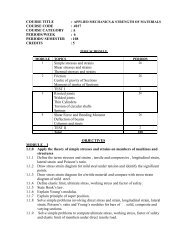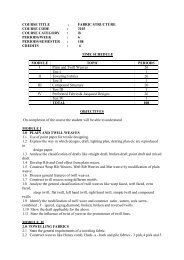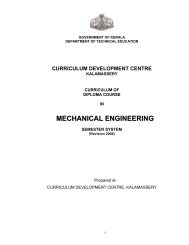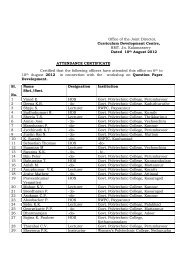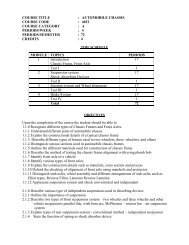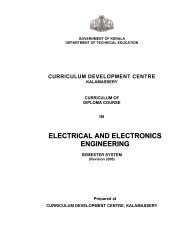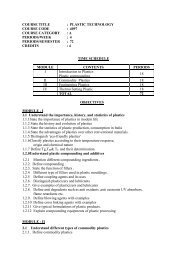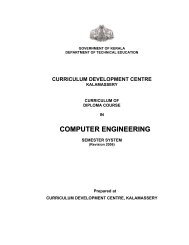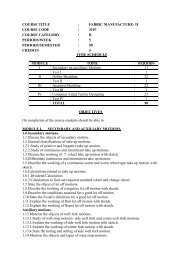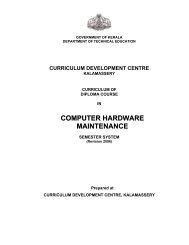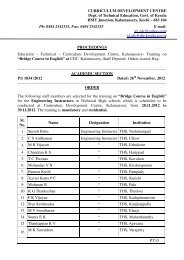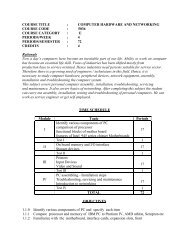23 - Curriculum Development Centre, Kalamassery
23 - Curriculum Development Centre, Kalamassery
23 - Curriculum Development Centre, Kalamassery
Create successful ePaper yourself
Turn your PDF publications into a flip-book with our unique Google optimized e-Paper software.
UNIT – II2.1.0 Understand preparation, properties & application of compounding ingredients2.1.1 Define filler and its classification2.1.2 Describe the preparation and application of various non black fillers like inorganicfillers fibrous filler, organic fillers and resinous filler2.1.3 Define carbon black2.1.4 Describe the methods of manufacturing various types of carbon black2.1.5 Classify carbon black2.1.6 Define colour coding of carbon black and international reference black2.1.7 State ASTM D 1765 for grading of carbon black2.1.8 Summarize the properties of carbon black particle size, structure, chemical andphysical nature porosity etc2.1.9 Describe the procedures for determination of particle size and structure of carbonblack2.1.10 Define degradation2.1.11 Describe the importance of antidegradants2.1.12 List the factors affecting degradation2.1.13 Explain staining and non staining Antioxidants,antiozonants2.1.14 Explain how plasticizers are classified. Give example and their effect on Vulcanisateproperties2.1.15 List out the special purpose compounding ingredients used in Rubber industriesUNIT – III3.1.0 Understand cure characteristics and cure measurements3.1.1 Define the terms cure time, cure index vulcanization time, scorch and scorch time,heat history of compounds optimum cure, state of cure, delayed action etc3.1.2 State the methods for avoiding scorch3.1.3 Illustrate a cure graph3.1.4 Distinguish the various cure graphs like scorchy, delayed action etc3.1.5 Explain the variation in cure graphs by changing the compounding ingredients suchas accelerator and vulcanizing agents3.1.6 Define viscosity, plasticity, elasticity3.1.7 Explain viscoelastic properties of elastomers3.1.8 Understand Plastometers and viscometers3.1.9 Describe Mooney viscometer3.1.10 Describe Rheometers3.1.11 Distinguish the cure graph between Mooney viscometer and Rheometers3.1.12 Explain the procedure for determination of cure characteristics of rubber compoundsusing Rheometers3.1.13 Define rate of cure, cross link density3.1.14 Describe the method for determination of cross link density3.1.15 Explain the swelling properties of rubber vulcanisate with different liquids3.1.16 Distinguish rate of cure and state of cure3.1.17 Explain the method for assessment of state of cure3.1.18 Explain calculation methods of cure in thick articlesUNIT – IV4.1.0 Analyze compounding for vulcanisate properties4.1.1 Explain the general principles of compounding chart out the properties elastomersused in rubber industry4.1.2 Describe elements to be considered for preparing a product4.1.3 Explain the design factors to be considered in the case of Tread Rubber, M.C, Hawaisole and ‘V’ strap etc72



